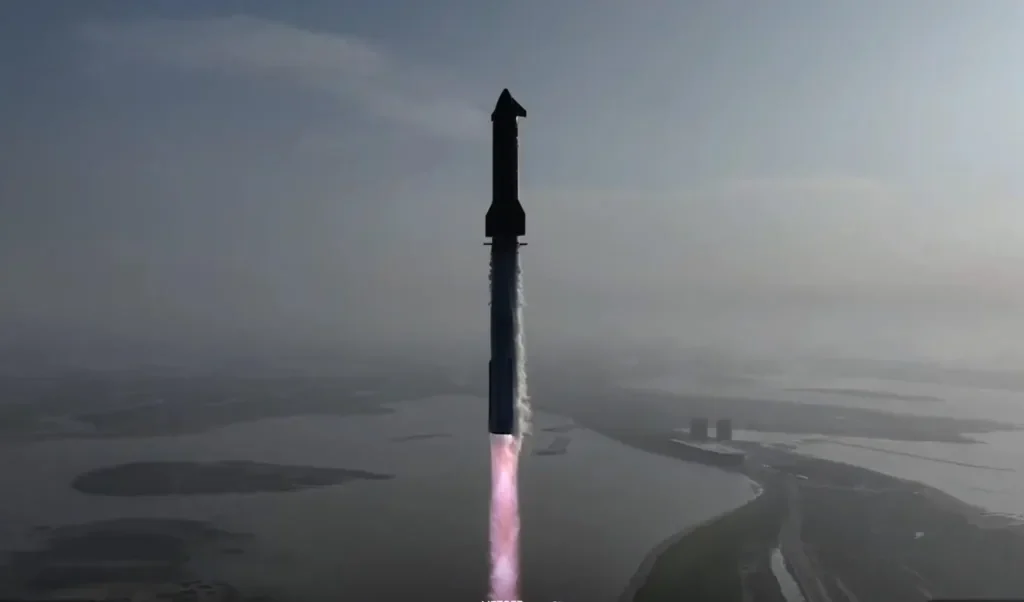SpaceX's Starship vehicle experienced a loss of attitude control after reaching space during its May 27 test flight, resulting in an uncontrolled reentry and the third consecutive failure to achieve a controlled splashdown.
The vehicle lifted off from SpaceX's Starbase facility in Texas at 7:36 p.m. Eastern time. The launch was briefly delayed due to an issue with ground equipment that required a countdown reset. Designated Flight 9, the mission aimed to address engine issues that had affected the vehicle's previous test flights.
Starship's six Raptor engines performed nominally during a burn lasting approximately six and a half minutes, placing the vehicle on a suborbital trajectory. However, video footage following engine shutdown showed the vehicle slowly rolling and venting propellant. About 30 minutes after liftoff, a SpaceX webcast host confirmed the loss of attitude control, citing a leak in the fuel tank systems.
“Leaks caused loss of main tank pressure during the coast and re-entry phase,” SpaceX CEO Elon Musk posted on social media, adding that future flights would proceed at a faster cadence, with launches planned every three to four weeks.
As a result of the anomaly, SpaceX passivated the vehicle by venting remaining propellant before reentry. Intermittent video captured signs of damage to a flap before telemetry was lost roughly 47 minutes into the flight. The reentry occurred over the Indian Ocean in a pre-designated area.
Planned test objectives—including opening Starship's payload bay door and releasing simulated Starlink satellites—were not fully achieved. The door failed to open, and the satellite release was canceled. A planned Raptor engine reignition in space and additional heat shield tests were also not conducted due to the vehicle's instability.
The mission used Booster 14, the first previously flown Super Heavy booster, which had launched Flight 7. SpaceX did not attempt a landing but aimed to conduct additional flight profile tests. The booster was destroyed during a final landing burn.
Flight 9 is the third consecutive test in which Starship has failed to complete a controlled reentry. While the causes have differed across flights, the continued setbacks add scrutiny to the vehicle's development as SpaceX prepares to support NASA's Artemis 3 lunar landing mission, scheduled for 2027.
Jared Isaacman, a private astronaut and nominee for NASA administrator, commended SpaceX for its transparency during the webcast. “Appreciate the transparency—and bringing us space enthusiasts along through the highs and lows of a test program,” he wrote on social media. He added that current challenges would become part of a broader narrative in the expansion of space exploration.
